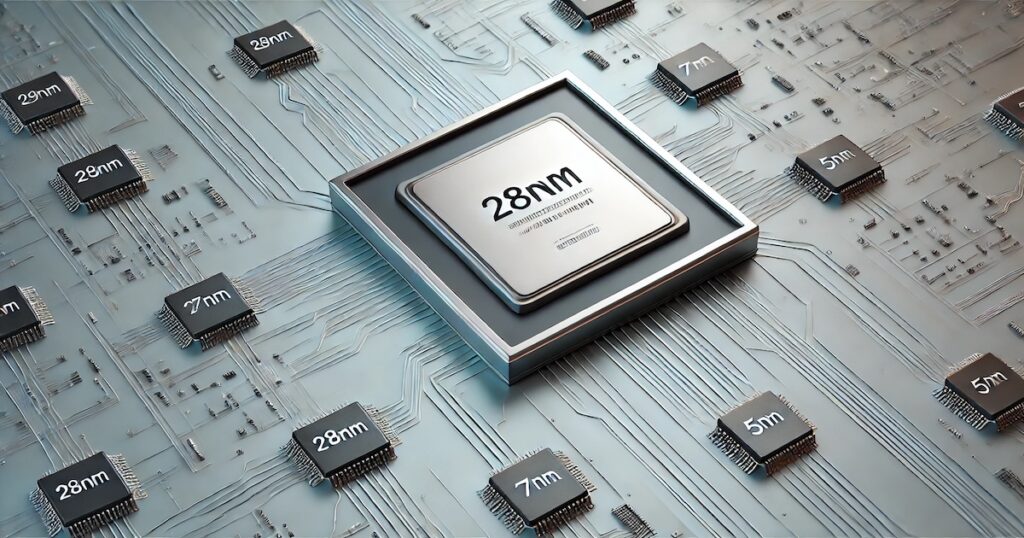Image Generated Using DALL-E
Semiconductor And India
In recent years, the semiconductor industry has emerged as a cornerstone of modern technology, underpinning advancements in everything from consumer electronics to automotive and healthcare systems.
India, recognizing the strategic importance of this sector, has embarked on a significant push to cultivate a robust semiconductor manufacturing base.
This initiative is about augmenting India’s technological capabilities and securing its position in the global supply chain, which is crucial in a world where technological superiority increasingly dictates economic and strategic dominance.
As India accelerates its semiconductor production, understanding the broader impact of this on various domestic industries becomes essential, highlighting the interconnected nature of modern economies and the foundational role semiconductors play within them.
Semiconductor Incentives And Focus
The Indian government’s proactive measures, including substantial investments and favorable policies, are pivotal and reassuring in fostering a conducive environment for semiconductor growth. Initiatives such as the $10 billion PLI (Production-Linked Incentive) scheme aim to attract global semiconductor players and build an indigenous ecosystem supporting advanced manufacturing techniques.
This strategic development is crucial as global industries face recurrent supply chain disruptions, most notably during the COVID-19 pandemic. This underscored the vulnerability of heavy reliance on concentrated semiconductor production hubs like Taiwan and South Korea.
By establishing local manufacturing capacities, India aims to mitigate these risks and set the stage for transformative effects across multiple sectors, from telecommunications and automotive to renewable energies and beyond.
The ripple effects of enhancing semiconductor self-sufficiency are vast, warranting a thorough exploration of how this technological pivot reshapes India’s industrial landscape and its implications for future growth and innovation.

Semiconductor Impact On Other Relevant Industries In India
India’s burgeoning semiconductor industry is poised to impact various sectors, profoundly catalyzing innovation and efficiency improvements. In the automotive industry, for instance, increased local chip production ensures a steady supply of essential components for intelligent vehicles, reducing production delays and fostering advancements in vehicle safety and connectivity.
For consumer electronics, the growth of India’s semiconductor industry translates to faster production cycles and significant cost reductions. It allows manufacturers to offer competitive pricing in a price-sensitive market, reassuring the industry’s competitiveness.
The telecommunications sector benefits from enhanced capabilities in local chip production, which is crucial for supporting the expansive deployment of 5G technology and the development of robust communication networks. Additionally, renewable energy initiatives can leverage advancements in semiconductor technology to improve the efficiency and effectiveness of solar panels and energy storage systems.
Overall, the growth of India’s semiconductor industry promises to bolster the technological infrastructure, leading to a more resilient economy and stimulating innovation across diverse industrial landscapes.
Which Industries In India Will Benefit From India’s Semiconductor Manufacturing Growth
As India scales up its semiconductor production, it is essential to understand how this foundational technology will influence various domestic industries, transforming everything from automotive to agriculture through enhanced efficiency, innovation, and competitiveness.
Below is a list of key Indian industries that stand to benefit significantly from scaling up semiconductor production, along with a brief explanation of how they will be transformed.
| Industry | Benefits of Local Semiconductor Manufacturing |
|---|---|
| Automotive | Enhanced supply chain reliability for electronic components, reduced production delays, development of advanced automotive technologies like ADAS and electric vehicles |
| Consumer Electronics | Lower production costs due to localized supply chains, faster market responsiveness to consumer demands, increased competitiveness in global markets |
| Telecommunications | Support for extensive 5G rollout and infrastructure, improved manufacturing of devices like routers and modems, enhanced capabilities for IoT and smart city technologies |
| Renewable Energy | Advanced technologies for solar inverters and energy storage systems, improved grid management through sophisticated semiconductor devices, support for India’s green energy targets and sustainability initiatives |
| Healthcare | Development of more sophisticated medical devices, enhanced reliability and functionality in healthcare equipment, support for telemedicine and remote health monitoring systems |
| Defense And Aerospace | Improved supply security for critical electronic components, enhanced capabilities in surveillance, communication, and navigation systems, support for indigenous production of high-tech defense equipment |
| Information Technology | Acceleration in server and data center infrastructure development, enhanced chipsets for high-performance computing applications, support for artificial intelligence and machine learning platforms |
| Banking And Finance | Improved security and processing capabilities for financial transactions, enhanced data management and analysis for customer insights, support for fintech innovations like blockchain and cryptocurrencies |
| Manufacturing | Integration of IoT and smart factory technologies, enhanced automation and robotics driven by reliable chipsets, greater efficiency and precision in manufacturing processes |
| Agriculture | Advancements in smart agriculture technologies, enhanced capabilities for precision farming and resource management, improved IoT devices for soil, weather, and crop monitoring |
Take Away
As India’s semiconductor manufacturing expands, its impact on various industries will become more evident. This increased local chip production will transform sectors by enhancing supply chain resilience, fostering technological innovations, and promoting economic growth. The benefits of this surge range from more robust and efficient automotive and manufacturing sectors to more innovative and sustainable agricultural and energy practices.
The strategic improvement of semiconductor capabilities will also strengthen India’s position in the global technology arena and ensure a future where high-tech industries, innovation, and self-sufficiency support its economy. Understanding and leveraging these effects will be critical for India as it strives to become a technological powerhouse.






